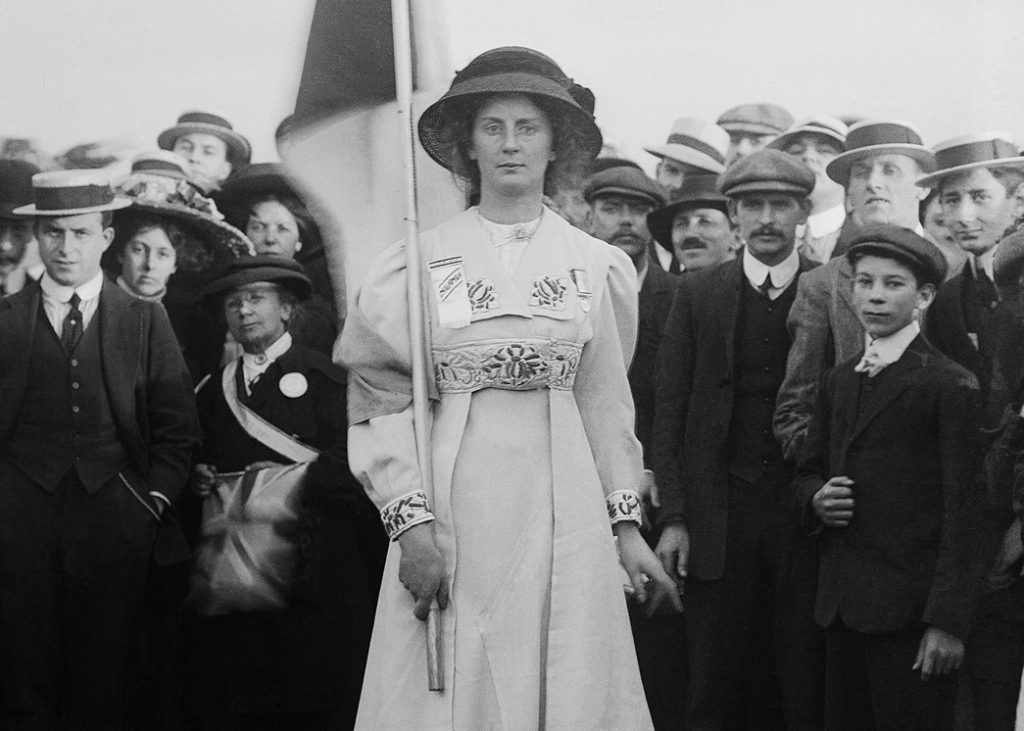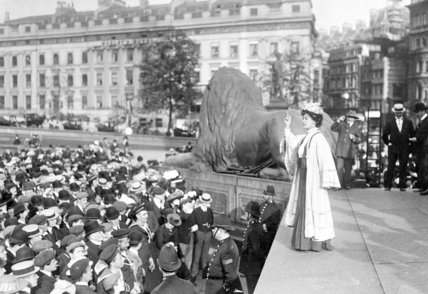Today marks the centenary since women were first awarded the vote. On the 6th February 1918, the Representation of the People Act was granted, which first gave the vote to women over 30 who met particular property qualifications. Today’s anniversary of such a momentous occasion gives House of Gharats a chance to delve deeper into the Suffragettes and question how far style played a role in their story. Influenced by the Museum of London’s Votes for Women display and the Stylist Magazine’s suffrage-inspired makeover we want to unstitch the seams of Suffragette clothes to rediscover their style driven methods. Combining style with substance had a unique effect and was an early form of fashion activism. Examining the early years of power dressing will help illuminate how style for political purposes has evolved. Here at House of Gharats, we celebrate past, present, and future of design and the suffragettes provide the perfect opportunity for us to embrace all three.



Charlotte Marsh, 18th June 1910. Photo: Courtesy of The Museum of London.
In this 5-week mini-series we, at House of Gharats, will consider the way in which fashion became powerful political armour for the Suffragette cause. In 1906 Charles Hands, writing for the Daily Mail, coined the term ‘suffragette’ as a derogatory way to describe the militant women campaigning for the right to vote. The suffragettes embraced this, rather than allowing the term to polarise them in society they instead entwined it into their protest. Emphasising delicate femininity in their fashion choices, the Women’s Social and Political Union (WSPU), led by Emmeline Pankhurst, combat stereotypical views of the “strong-minded woman” as someone who wore masculine clothes. ;Mrs Pankhurst and her three daughters, somewhat international celebrities in the debate, were particularly conscious of their appearance. Cecily Hamilton, a suffragette, spoke of Emmeline’s strict dress code she imposed under the WSPU as ‘a curious characteristic’. Adhering to the male image of a woman was a questionable choice of identity. Yet this was what made them so unique. Linking the spectacle of women’s bodies with the campaign for political representation for women in Britain was all part of their fight to be recognised. Rather than being a form of enslavement to the male gaze, this method was a form of agency and accoutrement of dissent.


 Emmeline Pankhurst, 1908. Photo: Courtesy of The Museum of London.
Emmeline Pankhurst, 1908. Photo: Courtesy of The Museum of London.
Images of Suffragettes on rallies and campaigns show flowing A-line skirts, blouses with high collars, and smart coats. Large hats were worn with floral foliage on top. Fighting for the vote with feminine fashion choices reinforced their argument that it was the women’s right as women to occupy space previously occupied by men alone. For while they fought for equal legal and political rights, they believed society and the suffrage cause needed women’s distinctive voice. They did not envision the dissolution of the sexes into a mutual gender. The suffragette paper, Votes for Women, encouraged this appropriate self-image in 1908 with comments such as ‘The suffragette of today is dainty and precise in her dress’.
In the below photo you can see Emmeline Pankhurst arrested and being carried bodily by Superintendent Rolfe, 21st May 1914. The context of this photograph provides further evidence of how the style was all part of a powerful tactic; Emmeline Pankhurst had been trying to present a petition to the King at Buckingham Palace at the time of this arrest. During 1914 Emmeline had decided to bypass government ministers and deal directly with ‘the Throne’. Emmeline Pankhurst knew that the recent appeal made by Irish republicans had resulted in the King calling an Irish conference, but her efforts to achieve a similar royal interest failed. Despite this, the feathered hat, tailor-made coat, dainty shoes, and high collared shirt with fanciful details that Emmeline wore showed a consciousness to dress to empower. Style was key to the suffragette slogan ‘DEEDS NOT WORDS’; their image was all part of the publicity.


 Emmeline Pankhurst, 21st May 1914. Photo: Courtesy of The Museum of London.
Emmeline Pankhurst, 21st May 1914. Photo: Courtesy of The Museum of London.
As Wendy Parkins says ‘by repeating those practices of dress that constituted a woman’s identity, and to deploy this constructed identity in acts of political protest, suffragettes challenged contemporary definitions of citizenship by their emphasis on particularity’. Confusing the public consensus of what made a strong-minded woman had, in turn, disturbed the integrity of contemporary laws. ‘The New Woman’ that had emerged at the turn of the century was a woman of independent spirit and unique style, the time had come to break out of the mould a man had set for her.
by Lily Rimmer